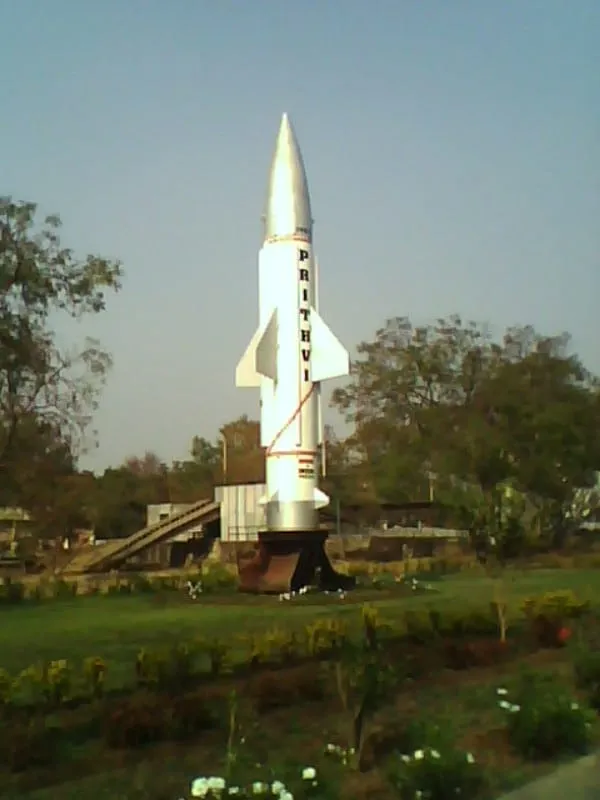Prithvi-1
| Name | Prithvi-1/Prithvi-I/P-1/SS-150 |
|---|---|
| Image |  |
| Country of origin | India (DRDO) |
| Variants | |
| Type | Short range ballastic missile (SRBM) |
| Range | 150 km |
| Flight ceiling | 30 km |
| Length | 9.5 m |
| Diameter | 110 cm |
| Fin span | Not known |
| Mass | 4400 kg |
| Warhead | 500-1000 kg, High explosives, penetration, cluster munition, fragmentation, thermobaric, chemical weapon and tactical nuclear weapon |
| Warhead yield | Not known |
| Detonation Mechanism | Not known |
| Max Speed | Not known |
| Propulsion | Liquid propellant |
| Engine | Single stage liquid engine |
| Guidance | Strap-down inertial navigation system |
| Launch platform | 8 x 8 Tata transporter erector launcher |
| Service period | 1996-Present |
| Accuracy | CEP: 50 m |
| Description | The Prithvi-1 is a short-range ballistic missile (SRBM) developed by India. It was the first missile developed under India’s Integrated Guided Missile Development Program (IGMDP). Prithvi-1 is a single-stage, liquid-fueled missile with a range of 150 km and can carry a 1,000 kg payload. It is designed to carry conventional or nuclear warheads. The missile uses an inertial navigation system for guidance and has a circular error probable (CEP) of around 10-50 meters, making it a relatively accurate weapon. Prithvi-1 is launched from a mobile transporter erector launcher (TEL), giving it high mobility and survivability. It was inducted into the Indian Army in 1996 and is considered a crucial part of India’s tactical nuclear arsenal. |
| Website | https://www.drdo.gov.in/ |
Disclaimer: This information is based on publicly available sources and should be considered for general knowledge purposes only.